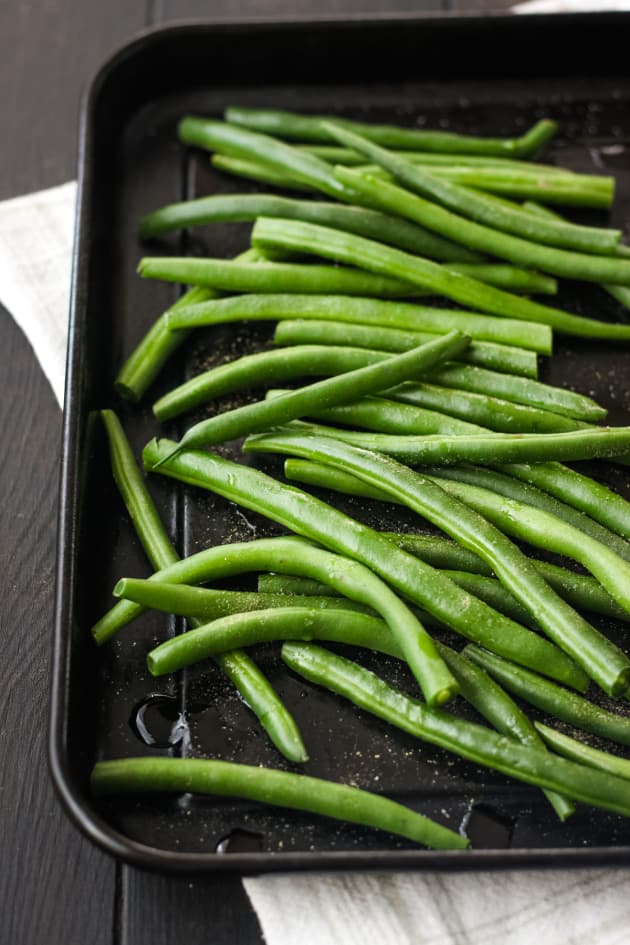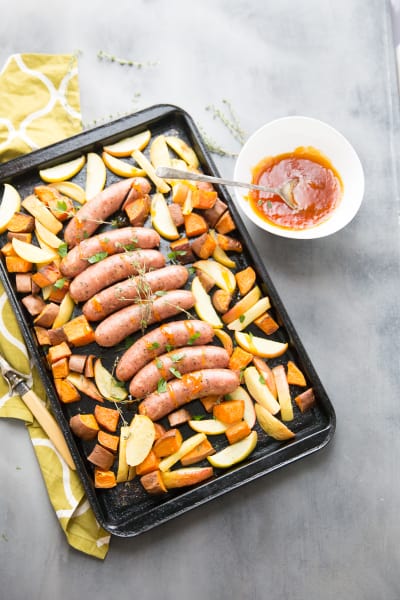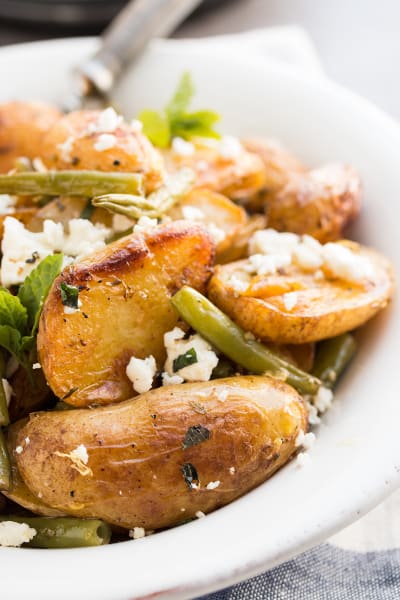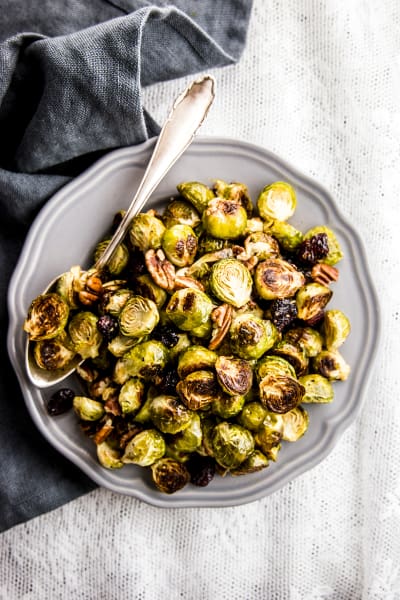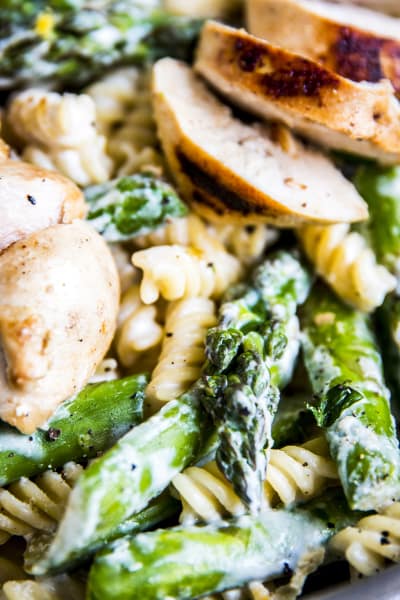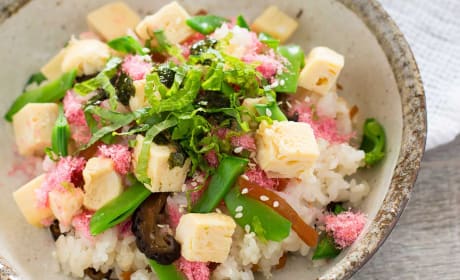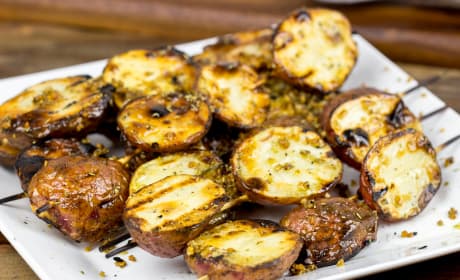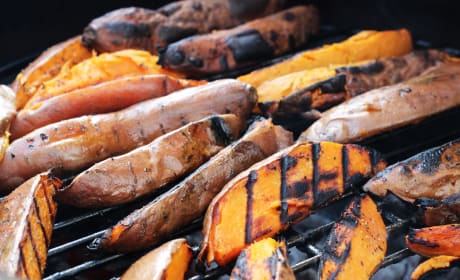What’s the Difference Between Blanching and Parboiling?
Melissa BahenBlanching and parboiling are incredibly useful food prep techniques. Find out what they are, how they’re different, and when they should be used.
Blanching and parboiling are both useful food prep techniques with a solid place in your kitchen repertoire. But, what's the difference between blanching and parboiling?
What are they? How are they different? What are their similarities? When is each one appropriate to use? We're breaking it all down for you right here.
In truth, blanching and parboiling are very similar. Both involve boiling an ingredient to then use in another dish.
From there the technique and the use is slightly different, yet both processes are simple, must-have skills in the kitchen.
What Is Blanching?
Let's first take a look at blanching. What is the defintion of blanching? And how do you blanch vegetables?
Blanching is a 2-step technique that halts the natural enzymatic process in fresh vegetables that causes them to lose color, flavor, and texture quality over time.
So, in a nutshell, it helps preserve the color and natural texture of veggies, keeping them fresh and flavorful for whatever dish you're preparing.
It's very common to blanch green beans or carrots, for instance, before serving them in cooled salads or freezing them for future use.
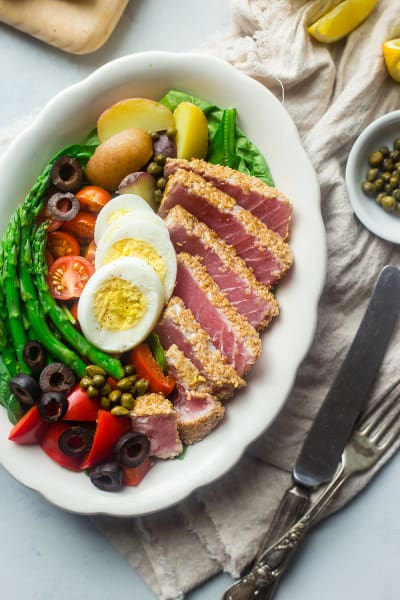
How to Blanch Vegetables
Vegetables aren't the only things you can blanch, but it's the most common application of this cooking technique.
Step 1 in blanching is to briefly plunge whatever you’re blanching into boiling water. Use tongs or a slotted spoon and take care not to splash the hot water.
This part usually only lasts a few minutes, and is what causes the enzymatic processes in the food to stop.
Step 2 in blanching is to quickly move whatever you’re blanching into an ice water bath, again taking care not to burn yourself with boiling water.
This quickly stops the cooking process and rapidly cools the fruits or veggies down. Doing so keeps the veggies colorful with a satisfying snap to the bite.
What Is Parboiling?
Parboiling is a mash-up of two words: “partial” and “boiling.” And that’s exactly what it is - partially boiling something so you can finish cooking it with another cooking method.
How long to parboil something depends on what you are parboiling, whether that’s parboiling potatoes, peppers, broccoli, or sweet poatoes.
Regardless of whether you are parboiling chicken, chicken wings, sausage, ribs, green beans, Brussels sprouts, or rice, the method is the same.
Once you have parboiled whatever food is in question, you can then immediately finish cooking it another way, which is particularly useful for dishes where some ingredients cook slower than others.
How to Parboil
Knowing how to parboil will totally elevate your game in the kitchen. You've never made more delicious ribs or French fries than you will now.
Step 1 Place the meat or veggies you are parboiling in a large saucepan or stock pot, then cover with cool water and add a big pinch of salt.
Step 2 Bring the water to a boil and boil for 8 to 12 minutes, depending on what exactly you are parboiling.
Step 3 Immediately remove from the boiling water and continue cooking, whether that is roasting, grilling or pan frying.
See our guide detailing how long to parboil chicken or any of our how-to parboiling guides for parboiling times.
Why Blanch Vegetables?
There are a few reasons a cook would want to blanch fruits or vegetables. Doing so keeps them tasting fresh and gives them a delightfully crisp texture.
If you are planning to freeze fresh vegetables for longer than a couple of weeks, you should blanch them first.
Doing so prevents that bumper crop of green beans, carrots, or corn from your garden from losing quality in texture, flavor, or color while in the freezer.
If you buy already frozen vegetables from the grocery store, they were blanched before they were frozen.
If you need to remove the skins from peaches or tomatoes, blanching makes the peels slide right off without cooking the produce at all.
This comes in handy if you don’t want tomato skins in your fresh salsa or sometimes bitter, fuzzy peach skins in your peach pie or peach raspberry galette.
Sometimes you want a vegetable that isn’t raw, but isn’t cooked until it’s completely soft and limp.
Think of the tender-crisp green beans in a summer salad, the perfect texture somewhere between too crunchy and too soft. Blanching can do that.
Why Do You Parboil?
In our opinion, parboiling is one of the most underrated cooking techniques. There are loads of reasons to parboil meat or veggies!
If you're making a sheet pan dinner, where everything else cooks in about the same amount of time, but that one ingredient takes longer to cook (such as potatoes), parboiling the potatoes first will help.
Then you can just toss the potatoes onto your sheet pan to finish cooking with everything else in the same amount of time.
Do you want to meal prep a stack of lunches for quick cooking and reheating throughout the week?
Parboiling cuts down on the time it’ll take you to microwave your lunch, while still giving you fresh results that aren’t mushy or overcooked.
There might be times when you want to cook something using a method that will take quite a while for that ingredient to be completely cooked or will lead to uneven cooking.
For example, brats are delicious, but if you were to cook them completely on the grill, the outside would get charred before the inside was cooked.
You're then stuck with bland, overcooked brats that have lost their juiciness and become dried out.
Parboiling brats first ensures that the inside is cooked through, the outside gets the char and grill marks you want, and the whole thing stays juicy and delicious.
You can even parboil sausages or brats in something other than water (such as beer or beef broth) to give them extra flavor.
What’s the Difference Between Blanching and Parboiling?
Are you feeling more comfortable about the difference between blanching and parboiling now? We hope so!
In short, blanching and parboiling have many similarities, but the goals of each process and the specific cooking methods are slightly different.
Now you know how to leverage both of these techniques to improve your kitchen game!
Planning a dinner party and need some inspiration?
How about looking for a new slow cooker dinner idea?
We’ve got you covered in our ever-growing Facebook group! If you’re not a member yet, why not?!

We’re chatting cooking techniques, dessert ideas, and everything in between. If you’re already a member, invite your friends to join us too!



